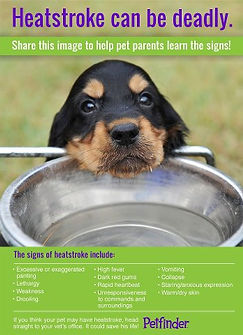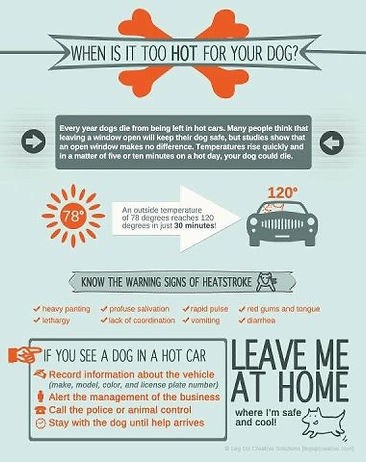
Safe Haven Pet Care and Boarding, LLC
Safe Haven Animal Rescue Society
911 - EMERGENCY!
DISCLAIMER: ALL SAFETY TIPS ARE GENERAL INFORMATION ONLY INTENDED TO GUIDE YOU IN SEEKING APPROPRIATE VETERINARY CARE AND TO CALL YOUR ATTENTION TO ONGOING ISSUES REGARDING YOUR PET'S HEALTH. NO ONE ASSOCIATED WITH THIS WEB PAGE IS OR PORTRAYS THEMSELVES TO BE A VETERINARY PROFESSIONAL.
IF YOUR PET HAS A MEDICAL EMERGENCY - CONTACT YOUR VETERINARIAN IMMEDIATELY!

The safety of your pet in an emergency needs to be considered before the emergency occurs. Just like your have a disaster plan for your family and children, you need to be prepared to provide for your pet as well. NEVER LEAVE YOUR PET BEHIND. The chances are that you will not be able to come back for it and it may be days before you can attend to its needs.
For more information on the safety of your pet, please go to the following websites located at:
For Disaster Preparedness
http://www.humanesociety.org/about/departments/disaster_preparedness.html
http://www.petfinder.com/pet-care/disaster-preparedness-pets.html
STORM WARNING!
FOR POISON INFORMATION

ASPCA POISON CONTROL 1-888-426-4435 (Telephone Consults May Incur a Fee)
For Additional Information on Poisoning visit the following website:
http://www.vetstreet.com/our-pet-experts/pet-poisons-from-a-to-z-what-you-absolutely-must-know?WT.mc_id=ckfacebook%3Bpetpoisons

BEAT THE HEAT
The following tips are for your information only... in the event of a medical problem...always contact your veterinarian for instructions and treatment.
For Heat Related Injury to you Pets - During the hot summer months, your pet can suffer from heat exhaustion, heat stroke or even death from hyperthermia.
Review the following articles and be aware of the symptoms. Heat related injuries and illnesses are life-threatening...be prepared and know the signs and symptoms that your pet is in trouble. This applies to all your pets that may be exposed to heat - dogs, cats, guineas, ferrets, horses and other barnyard animals. The following websites provide information regarding heat realated issues in pets.
http://www.pets.ca/dogs/articles/heat-stroke-in-pets/
http://horses.about.com/od/basiccare/qt/keepcool.htm
Along for the ride...


Never leave your pet in a locked car. Not only does a car heat up to deadly temperatures very rapidly, many pets are stolen while you take just a few minutes to take care of your errands. If you are not going somewher pet friendly so you can take them inside with you - leave them at home where they will be safe.
Baby, it's cold outside!
The following tips are for your information only... in the event of a medical problem...always contact your veterinarian for instructions and treatment.
Winter's frigid temperatures and howling wind is the perfect excuse to stay in and curl up in a blanket, but our pets still need to get outdoors for exercise and fresh air. And as we bundle up to brave the cold, it's important to be aware that that cold can be dangerous for pets. Just like humans, pets can get hypothermia and frostbite. Hypothermia occurs when the body temperature drops below normal. Indoor dogs, particularly small and/or shorthaired ones are obviously more susceptible, but even outdoor dogs with heavy coats can be affected by extreme cold and wind if they lack adequate shelter. Old dogs, puppies, and those with pre-existing medical conditions are also at greater risk.
Signs of mild hypothermia include violent shivering, listlessness, weakness, and depression, and body temperature in this stage is between 90 and 97 Fahrenheit. Mild hypothermia can be treated with blankets and insulation. Contact your veterinarian, even if your pet seems to be back to normal.

Moderate hypothermia is characterized by muscle stiffness, low heart rate and blood pressure, slow and shallow breathing, and stupor, and body temperature during moderate hypothermia is 82F to 90F. Moderate hypothermia requires application of external heat sources such as heating pads, warm water packs or hot water bottles (warm to wrist) applied to the abdomen, chest, armpit, or groin areas, not the limbs. Always put a protective layer between the heat source and the skin to prevent burns and tissue damage. A hair dryer on the low setting is also useful, especially if the animal is wet. Continue until the rectal temperature reaches 100F. Provide an energy source such as a couple of tablespoons of honey in a cup of warm water once the dog begins to move about. As the tissues warm, they may be painful causing the animal to bite or chew at the area. Contact your veterinarian in all cases of moderate hypothermia.
When body temperatures drop below 82F, severe hypothermia sets in and the results are collapse and coma. Severe hypothermia is a medical emergency and requires intensive veterinary care including core warming techniques and intravenous fluids. Homeopathic Aconite 30C may be given every 15 minutes until the animal begins to respond. If he or she is unconscious, alternate with Carbo vegetabilis 30C, in drop or crushed form.
Prevention, as always, is the best medicine. Reduce outdoor excursions in extreme cold or wind chill conditions especially for old or debilitated pets and provide protective coats (and boots if tolerated) for shorthaired or recently clipped ones. Getting wet increases the risk and speed of onset. Watch for signs of cold including reluctance to move or shaking a leg due to cold and painful feet. Do not leave your pet outside without supervision. Do not leave your pet in the car while you run errands on a cold day. The temperature inside the car can drop quickly especially in a strong wind. Remember too, while you may be warm and comfortable in several insulating layers of clothing, your pet may not be as well protected.
Frostbite is also a problem for dogs and cats, generally effecting the tips of the ears, the tail, scrotum and, rarely, the toes. A frostbitten area appears gray or white and is cold and hard to the touch; it is usually painless. Early treatment is important:
-
Warm the part with warm water soaks or compresses (warm to the wrist).
-
Do not use hot water, dry heat such as hair dryers, or rub the area.
- Never warm a frostbitten area if it cannot be kept warm. Refreezing can cause serious tissue damage.
As circulation returns, the skin will become red and swollen and may be very painful. Keep your pet warm and have him/her checked immediately by your veterinarian. If the circulation has been severely compromised, there will be a line of demarcation between live and dead tissue, which will eventually slough off. In severe cases amputation may be necessary.
You can support your pet's recovery through the use of homeopathic Agaricus muscarius 6C every hour in the acute phase, until circulation is restored. Calendula cream applied to swollen or blistered skin two or three times a day is soothing and healing.
As with hypothermia, prevention is your best defense against frostbite. Reduce outdoor time in extreme cold and wind chill conditions, and do not leave your pet outside unsupervised. A few simple precautions and changes to your routine will leave your pet healthier and happier this winter..

See In the Community for Healthy Homemade Treats for your Dogs.